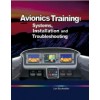New Edition of the most widely-used engineering text on avionics
Written by an eminent professor of avionics, Dr. Albert Helfrick of Embry-Riddle University, this book includes every communication and navigation system, plus the latest spaced-based avionics. The text describes navcom, transponder, VOR, ADF, DME, TACAN, instruments, radar, autopilot, collision avoidance and enhanced ground proximity warning.
The book also covers recent systems; Mode S, electronic displays, Free Flight,GPS space and earth segments, laser gyro's, fiber optics and avionics architectures. Principles of Avionics is the most timely book on avionics now available.
This edition introduces a new chapter on the most important concept now affecting avionics; “Performance-based Navigation and Required Navigation Performance.” Dr. Helfrick explains how avionics, once discussed as separate systems, are now viewed as components in a much larger infrastructure for air traffic management. He describes the technical requirements affirmed by ICAO (International Civil Aviation Organization).
The author describes the theory of each system with figures, photos, problems and solutions. Over 150 graphics illustrate basic principles. Dr. Helfrick is also well-known as an avionics test equipment designer, consultant to FAA, and frequent speaker at the Digital Avionics Conference. In his teaching role at Embry-Riddle Aeronautical University, Professor Helfrick's students are in 2- and 4-year engineering programs.He wrote this book to meet a longstanding need for a text and reference for anyone needing to know the latest theory and practice behind airborne electronic systems.
5a The Columbia Model 5421 Single-Channel Power Supply provides a convenient unity gain interface between any Columbia 8000 or 900 Series Integrated Piezoelectric Accelerometer and a variety of display or analyzing type instruments. This supply provides a 4.0 mA DC constant current to the pre-amplification circuitry within the transducer thus eliminating the need for a complex and costly charge amplifier. This current source will permit the use of any length output cable up to 500 feet long.
The Model 5421 requires a user-supplied source of DC voltage between +12 and +32 volts. The minimum voltage should be chosen to be at least six volts greater than the specific output bias level of the selected transducer.
The BNC output jack provides a convenient interface for oscilloscopes, spectrum analyzers or other signal analyzing instruments. It may be directly connected to the BNC input of an oscilloscope or other instrument by the use of a UG-491 BNC plug-to-plug adapter.















